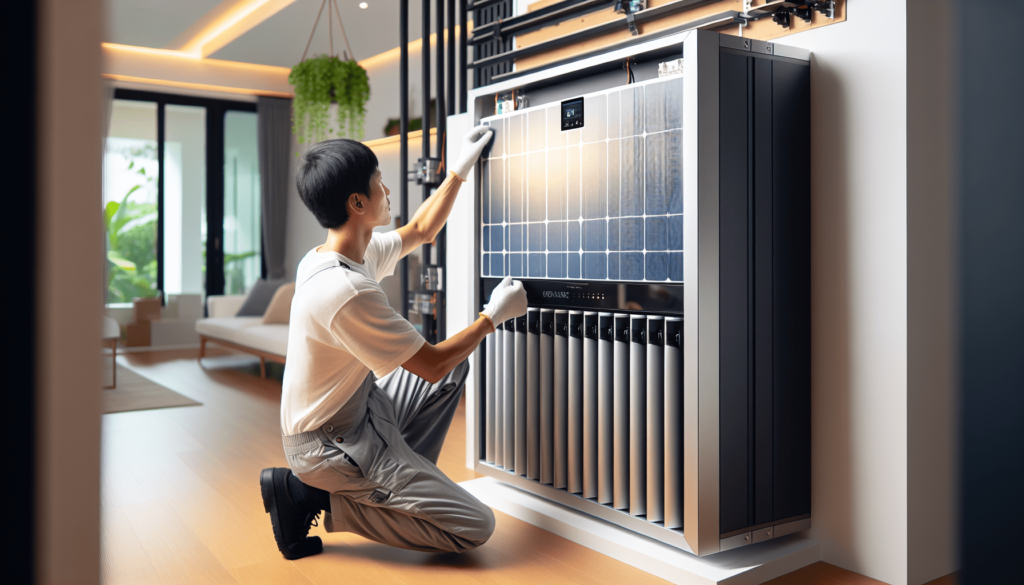Are you considering installing a Tesla Powerwall 3 in your home? Look no further! In this article, you will discover the top tips for installing this innovative energy storage system in your home. From choosing the right location to understanding the installation process, we’ve got you covered. Let’s get started on harnessing the power of clean energy in your home with Tesla Powerwall 3! Hey there! Are you considering installing a Tesla Powerwall 3 in your home but not sure where to start? You’ve come to the right place! Whether you’re looking to save money on your electricity bills, reduce your carbon footprint, or just want to have backup power during blackouts, the Tesla Powerwall 3 is a great investment. In this article, I will walk you through the top tips for installing the Tesla Powerwall 3 in your home. Let’s get started!
What is the Tesla Powerwall 3?
The Tesla Powerwall 3 is a home battery storage unit that allows you to store excess solar energy generated by your solar panels during the day so you can use it at night or during power outages. It is designed to improve energy efficiency, increase the self-consumption of solar power, and provide a backup power supply.
Benefits of Installing Tesla Powerwall 3
Installing a Tesla Powerwall 3 in your home comes with a variety of benefits, including:
- Reducing your electricity bills by storing excess solar energy for later use
- Providing backup power during blackouts
- Reducing your carbon footprint by using clean energy to power your home
- Increasing energy independence by relying less on the grid
These benefits make the Tesla Powerwall 3 a smart choice for homeowners looking to save money and reduce their impact on the environment.
Planning for Tesla Powerwall 3 Installation
Before you jump into installing a Tesla Powerwall 3 in your home, there are a few key things you need to consider and plan for.
Determine Your Energy Needs
The first step in planning for a Tesla Powerwall 3 installation is to determine your energy needs. Consider how much electricity your household uses on average, how many solar panels you have, and how much excess energy you typically generate. This will help you determine the size and number of Powerwall units you need to meet your energy needs.
Assess Your Home’s Electrical System
It’s also important to assess your home’s electrical system to ensure it can support the installation of a Tesla Powerwall 3. Check if your electrical panel has enough space for the Powerwall unit, and consult with a licensed electrician to make any necessary upgrades to accommodate the installation.
Evaluate Installation Location
Decide where you want to install the Tesla Powerwall 3 in your home. The unit should be placed in a well-ventilated, indoor location that is easily accessible for maintenance. Consider factors like temperature, humidity, and proximity to your solar panels when choosing the installation location.

Sizing and Configuring Your Tesla Powerwall 3
Once you have completed the planning process, it’s time to size and configure your Tesla Powerwall 3 for installation.
Determine the Number of Powerwall Units
Based on your energy needs and the amount of excess solar energy you generate, determine the number of Tesla Powerwall units you need for your home. Tesla offers the Powerwall 3 in different storage capacities, so choose the size that best fits your energy requirements.
Connect Your Powerwall to Solar Panels
The next step is to connect your Tesla Powerwall 3 to your solar panels. This will allow the Powerwall to store excess solar energy generated during the day for use at night or during blackouts. Consult with a professional solar installer to ensure proper connection and configuration.
Configure the Powerwall Settings
Before installing your Tesla Powerwall 3, configure the settings to optimize its performance based on your energy usage patterns. Adjust settings like backup reserve capacity, self-powered mode, and time-based control to maximize energy savings and efficiency.
Installing Your Tesla Powerwall 3
Now that you have planned, sized, and configured your Tesla Powerwall 3, it’s time to install the unit in your home.
Hire a Professional Installer
For a safe and efficient installation, hire a professional installer with experience in working with Tesla Powerwall units. They will ensure that the unit is properly installed, connected, and configured to meet your energy needs and comply with local building codes.
Mounting the Powerwall
The Tesla Powerwall 3 should be mounted securely on a wall in an upright position. Ensure that the mounting location is sturdy, level, and easily accessible for maintenance. Follow the installation instructions provided by Tesla to mount the unit correctly.
Connecting the Powerwall to Your Electrical System
After mounting the Powerwall, connect it to your home’s electrical system, including the solar panels, electrical panel, and loads. Make sure all connections are secure, properly insulated, and in compliance with local electrical codes.

Maintaining and Monitoring Your Tesla Powerwall 3
Once your Tesla Powerwall 3 is installed, it’s important to maintain and monitor the unit to ensure optimal performance and longevity.
Regular Maintenance
Perform regular maintenance checks on your Tesla Powerwall 3, including cleaning the unit, checking for wear and tear, and monitoring its performance. Schedule annual maintenance visits with a professional installer to inspect and maintain the unit.
Monitoring Energy Usage
Use Tesla’s app or online monitoring portal to track your energy usage, solar production, and Powerwall performance. Monitor energy flows, battery charge levels, and system efficiency to optimize your energy usage and savings.
Troubleshooting and Support
In case you encounter any issues with your Tesla Powerwall 3, contact Tesla’s customer support for troubleshooting and assistance. They can help you diagnose and resolve technical problems, provide software updates, and offer guidance on optimizing your Powerwall system.
Conclusion
Installing a Tesla Powerwall 3 in your home is a smart investment that can help you save money, reduce your carbon footprint, and increase your energy independence. By following these top tips for installing the Tesla Powerwall 3, you can ensure a smooth and successful installation process. Remember to plan, size, configure, install, and maintain your Powerwall properly to enjoy its benefits for years to come. Happy powering!
Remember, if you have any questions or need further assistance with installing your Tesla Powerwall 3, don’t hesitate to reach out to Tesla’s customer support or consult with a professional installer. Taking the time to plan, size, configure, install, and maintain your Powerwall properly will ensure that you get the most out of this innovative energy storage solution. Thanks for reading, and best of luck with your Tesla Powerwall 3 installation!
